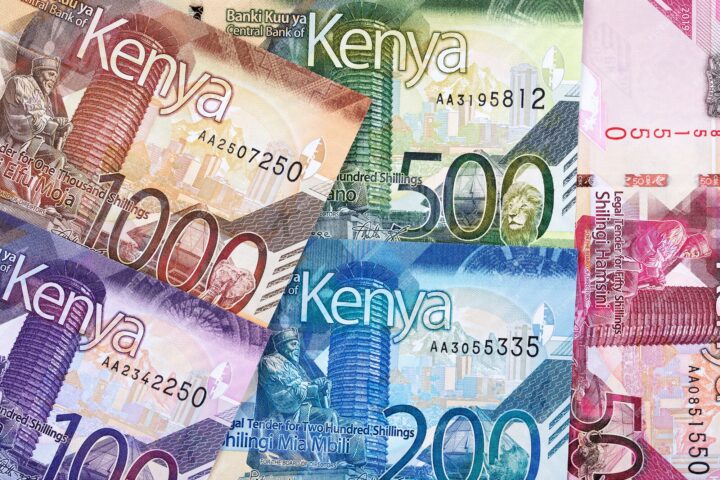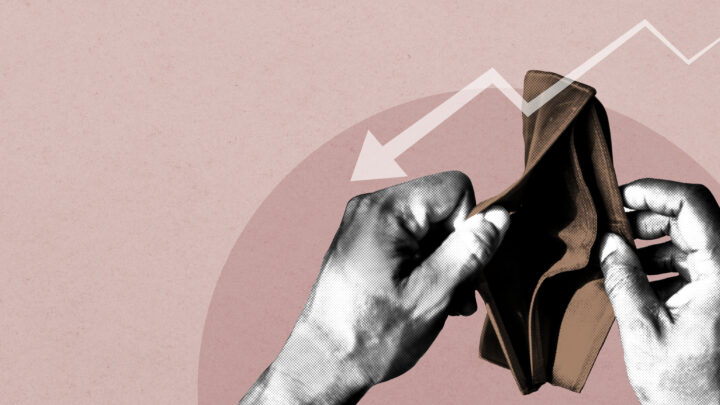Imagine this: Ten years ago, you could walk into any store in Kenya with a Ksh1,000 note and walk out with bags laden with goods. Fast-forward to today and that same Ksh1,000 note might only get you a quarter of those goods, if not less. You wouldn’t be wrong to think the Ksh1,000 note has lost value. What you’re witnessing is a classic example of the decline in purchasing power. Let’s explore how and why this happened and its impact on the everyday Kenyan shopper.
The rate at which the general level of prices for goods and services is rising, and subsequently, purchasing power is falling, is referred to as inflation. Inflation erodes the value of money over time. – The Economic Times
What is Inflation, and How Does it Affect Purchasing Power?
Purchasing power is the currency’s value expressed in the number of goods or services that one unit of money can buy. Inflation, the increase in the general price level of goods and services, reduces purchasing power—meaning your money buys less over time.
Keep reading as we analyze the decline of Kenya’s Ksh1,000 note over the past 14 years (2010–2024), discuss the economic factors responsible for this downward shift, and offer insights into future trends.
Factors Influencing the Decline in Purchasing Power
As you ponder the reasons behind the significant decrease in the value of Ksh1,000 over the last decade in Kenya, it’s essential to understand what has been influencing this agonizing drop in purchasing power. Here, we will uncover the main factors contributing to this downward slope.
1. Inflation: The Silent Eroder of Wealth
Kenya’s inflation rate has fluctuated over the years, but the long-term trend shows a steady rise in prices:
- 2010–2020 Average Inflation: ~6.2% per year
- 2021 Inflation: 6.1%
- 2022 Inflation: 7.7% (peaked at 9.6% in October due to high food and fuel prices)
- 2023 Inflation: 7.8% (remained elevated due to currency depreciation and global supply shocks)
- 2024 (Projected): ~6.5% (Central Bank of Kenya target: 5% ± 2.5%)
This means that prices have more than doubled since 2010, drastically reducing what Ksh1,000 can buy.
2. Exchange Rate Depreciation: A Weaker Shilling
The Kenyan shilling has faced consistent devaluation against major currencies, particularly the US dollar:
- 2010: ~Ksh 80/USD
- 2020: ~Ksh 108/USD
- 2022: ~Ksh 120/USD
- 2023: Ksh 150–160/USD (all-time low)
- 2024 (June): ~Ksh 130–140/USD (slight recovery due to IMF support and diaspora remittances)
A weaker shilling makes imported goods (fuel, electronics, machinery) more expensive, further driving up inflation.
3. High Interest Rates & Cost of Borrowing
- The Central Bank Rate (CBR) rose from 7% in 2020 to 13% in 2024, making loans more expensive.
- This has slowed business expansion and reduced disposable income for households.
4. Government Policies & Taxation
- Increased taxes (e.g., 2023 Finance Act introducing new levies) have raised the cost of living.
- High public debt (over Ksh 11 trillion in 2024) has put pressure on the economy.
5. Global Economic Shocks
- COVID-19 (2020–2021) disrupted supply chains.
- Russia-Ukraine War (2022–…) increased fuel and wheat prices.
- Drought (2022–2023) drove up food prices.
Effects on Basic Necessities: Food, Housing, and Utilities
A decade ago, with just Ksh1,000, you could pay your monthly utility bills, buy a week’s worth of groceries, and still have change left over. Fast forward to 2024, and the harsh reality of Kenya’s weakened purchasing power sets in.
Price Changes (2010 vs. 2024)
| Item | 2010 Price (Ksh) | 2024 Price (Ksh) | Increase (%) |
|---|---|---|---|
| 1kg Maize Flour | 40 | 180 | 350% |
| 1kg Rice | 80 | 250 | 212% |
| 1L Petrol | 90 | 200 | 122% |
| Monthly Rent (1-bedroom, Nairobi) | 8,000 | 25,000 | 212% |
Sources: KNBS, CBK, Energy Regulatory Commission
This means:
- Ksh1,000 in 2010 could buy 25kg of maize flour.
- Ksh1,000 in 2024 buys only 5.5kg of maize flour.
The falling purchasing power affects basic needs, forcing Kenyans to make tough budgeting choices.
Difference Between 2022 vs. 2024
Just two years ago, Ksh1,000 had more value. Let’s compare:
| Parameter | 2022 | 2024 | Change |
|---|---|---|---|
| Exchange Rate (KES/USD) | Ksh 120/USD | Ksh 135/USD | 12.5% weaker |
| Petrol per Ksh1,000 | 6.3 liters | 5 liters | 20% less |
| Real Salary Value (Ksh50,000) | Ksh 42,500 (after inflation) | Ksh 38,000 | 10.6% loss |
The shilling’s depreciation and inflation have significantly reduced Kenyans’ purchasing power.
Economic Outlook for 2025 in Kenya
- GDP Growth: Projected between 5.0% and 5.4%, with the National Treasury estimating 5.3% and the IMF forecasting 5.0%
- Inflation: Expected to stabilize around 3.6% as of March 2025, within the Central Bank’s target range of 2.5%–7.5%
- Exchange Rate: The Kenyan shilling has shown signs of stabilization, supported by IMF programs and monetary policy adjustments.
- Key Risks: High public debt levels, potential climate-related shocks, and global economic uncertainties remain significant concerns.
How to Protect Your Money in 2025
- Invest in Dollar-denominated assets (e.g., forex, global stocks).
- Consider high-interest savings accounts (e.g., money market funds).
- Reduce unnecessary spending and budget wisely.
- Diversify income sources (side hustles, freelance work).
Final Thoughts
The Ksh1,000 note has lost over 60% of its value since 2010 due to inflation, currency depreciation, and economic shocks. While the outlook for 2025 shows slight improvements, Kenyans must adopt smart financial strategies to cope with rising costs.
What has been your experience? How far does Ksh1,000 go for you today compared to a few years ago? Share your thoughts in the comments!
Source: Central Bank of Kenya, Kenya National Bureau of Statistics, and World Bank Data.
Get informed on how to do more with your money.





